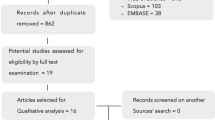The cancellous bone stresses surrounding proximal femoral prostheses were investigated using the finite element method and the results correlated with clinical subsidence data for similar implant configurations. The finite element study has shown that press-fit prostheses generate significantly higher cancellous bone stresses than bonded (cemented and HA coated) prostheses. The cancellous bone stresses surrounding press-fit implants are sensitive to the coefficient of friction, with up to a 60% decrease observed when the coefficient of friction was increased from 0 to 0.4. Resecting the femoral neck generally increased the cancellous bone stresses however varying the thickness of the cement mantle had little or no effect. Good correlation was found between the finite element results and the clinically measured subsidence data. Implant configurations generating higher cancellous bone stresses were those which subsided the most. This observation suggests that it may be possible to use the initial cancellous bone stresses to predict the likelihood of migration and hence late aseptic loosening.
Similar content being viewed by others
References
H. MALCHAU, P. HERBERTS and L. AHNFELT, Acta Orthop. Scand. 64 (1993) 497.
M. A. R. FREEMAN and P. PLANTE-BORDENEUVE, J. Bone Jt. Surg. 76B (1994) 432.
J. KäRRHOLM, B. BORSSEN, G. LöWENHIEL and F. SNORRASON, J. Bone Jt. Surg. 76B (1994) 912.
J. SCHIMMEL and R. HUISKES Acta Orthop. Scand. 59 (1988) 638.
L. LINDER, Acta Orthop. Scand. 65 (1994) 654.
M. C. MICHEL, X. E. GOU, L. GIBSON, T. A. MCMAHON and W. C. HAYES, J. Biomech. 26 (1993) 453.
S. M. Bowman, T. M. Keaveny and T. A. McMahon, in Proceedings of the 39th Annual Meeting ORS, San Francisco, February 1993.
M. TAYLOR, K. E. TANNER, M. A. R. FREEMAN and A. L. YETTRAM, Med. Eng. Phys. 17 (1995) 544.
F. LINDE, I. HVID and F. MADSEN, J. Biomech. 25 (1992) 359.
T. M. KEAVENY, X. E. GOU, E. F. WATCHEL, T. A. MCMAHON and W. C. HAYES, J. Biomech. 27 (1994) 1127.
T. M. KEAVENY and W. C. HAYES, Trans. ASME 15 (1993) 534.
G. E. KEMPSON, M. A. R. FREEMAN and M. A. TUKE, Biomed. Eng. 10 (1975) 166.
I. HVID, O. RAMUSSEN, N. C. JENSEN and S. NIELSON, Clin. Orthop. Rel. Res. 199 (1985) 306.
I. HVID, Clin. Orthop. Rel. Res. 227 (1988) 210.
N. Verdonschot and R. Huiskes, in Trans. EORS, London, April 1994, p. 13.
P. Braud and M. A. R. Freeman, J. Arthroplasty 5 (1990) S5.
M. Taylor, K. E. Tanner, M. A. R. Freeman and A. L. Yettram, “2nd International Symposium of Computer Methods in Biomechanics and Biomedical Engineering” (Gordon and Breach, in press).
X. E. GOU, T. A. MCMAHON, T. M. KEAVENY, W. C. HAYES and L. GIBSON, J. Biomech. 27 (1994) 145.
Author information
Authors and Affiliations
Rights and permissions
About this article
Cite this article
Taylor, M., Tanner, K.E., Freeman, M.A.R. et al. Finite element modelling—predictor of implant survival?. J Mater Sci: Mater Med 6, 808–812 (1995). https://doi.org/10.1007/BF00134322
Received:
Accepted:
Issue Date:
DOI: https://doi.org/10.1007/BF00134322




